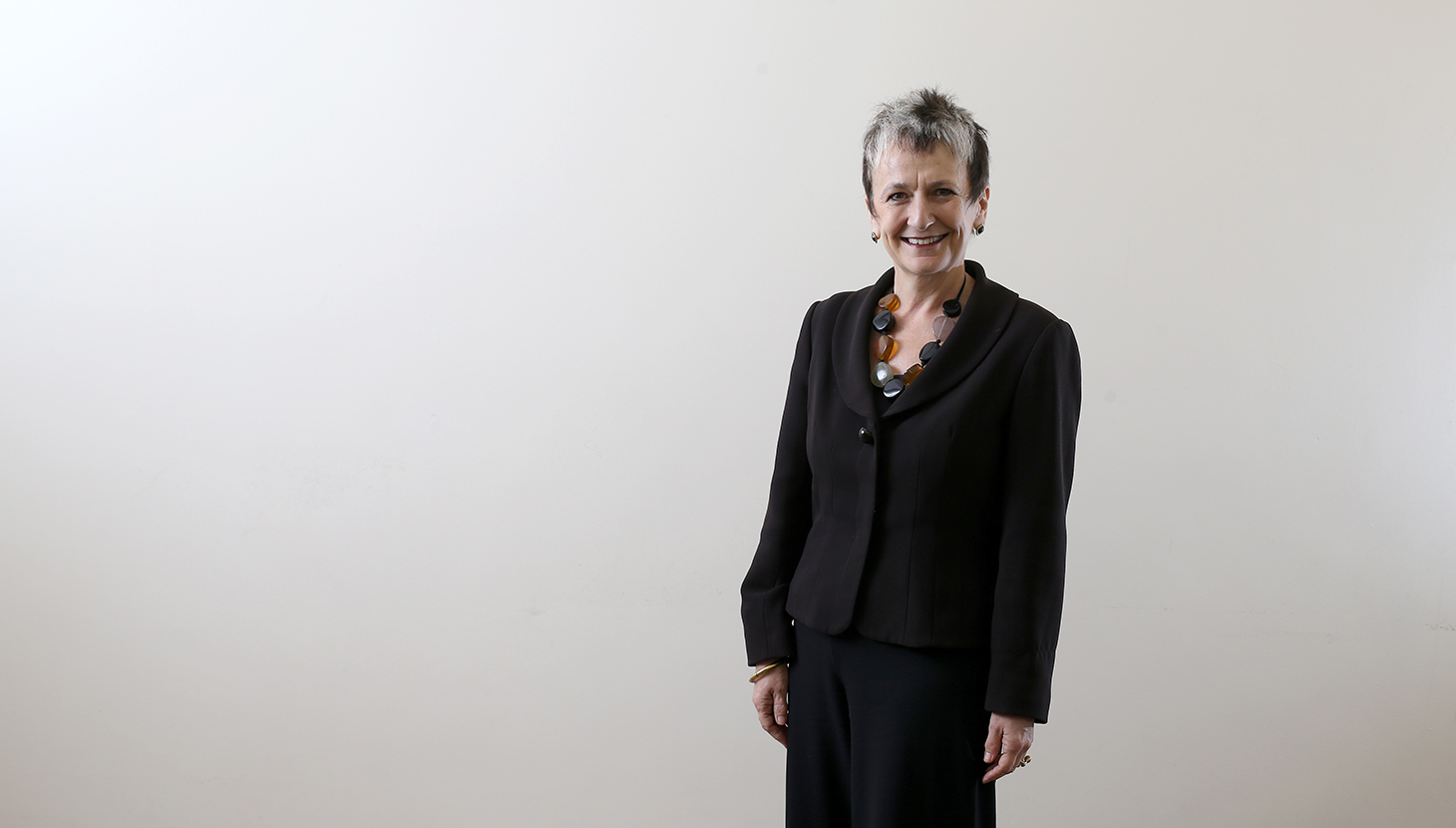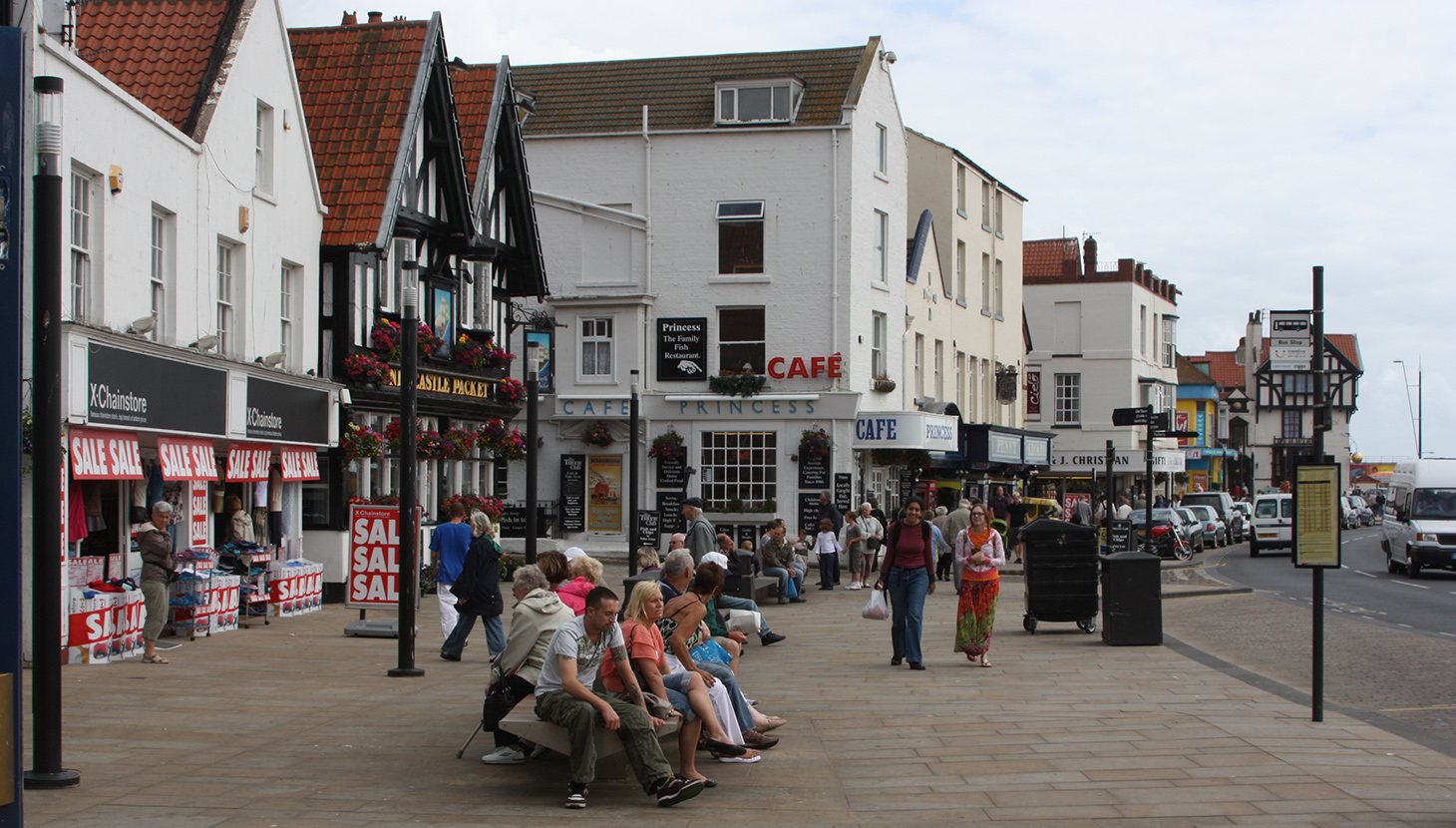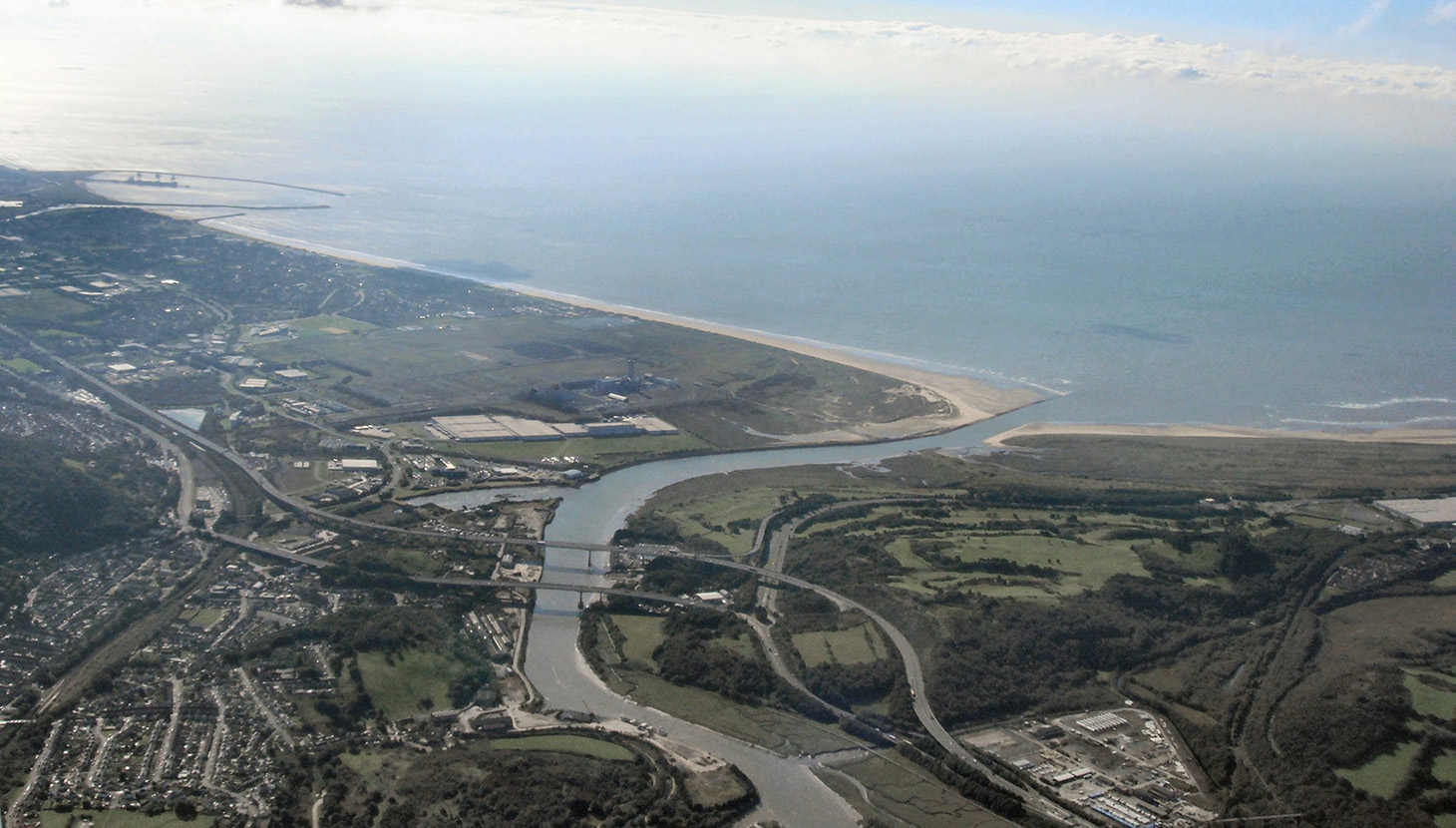
Julia Unwin CBE AoU
For Here & Now James Gross AoU caught up with Julia Unwin CBE AoU prior to her stepping down from 10 years at the helm of the Joseph Rowntree Foundation (JRF) and in advance of her chairing a new Inquiry into the Future of Civil Society.
The Joseph Rowntree Foundation, alongside its involvement with sustainable urban neighbourhoods such as Derwenthorpe, has a long and established history of tackling the root causes of poverty and social exclusion. As part of Here & Now’s focus on mechanisms and analysis of how to connect to the disenfranchised, we wanted to establish some of the key pointers towards successful enfranchisement and how (and who) practitioners should be targeting to ensure a greater sense of true success when regenerating poor areas of the UK.
JU: “At JRF we talk a lot about the ‘geography of poverty’. We know that there are 13.5 million people in the UK without enough to get by, which is the definition we’ve used to describe people in poverty, which causes real harm; to not just to them as individuals but also to the communities in which they live. Too often their only power in times of change is to resist. Our planning system privileges the ability to resist and say no, rather than to imagine and to create something new.
However it’s really important to recognise that there are some places where poverty is concentrated and that there are equally the same number of people who are not in poor places who are poor. It’s probably a bigger group in poverty who feel disenfranchised, but the people who haven’t got the money to take part, and who are less likely to be home owners (or if they are home owners they may be in more precarious home ownership), are the ones who are likely to be disenfranchised in any local decision making. This presents a real challenge for public policy makers – whether they focus on the poorest places, or on the poorest people who are spread between the poorest places and other places”.
H&N: So, a question for regeneration professionals is how to recognise that poverty in different areas will have different impacts on who can take part in debate given the challenge of focusing on poorest places or people?
JU: “I suspect that for regeneration professionals both of those are quite a dilemma and present a conundrum. In areas of concentrated poverty you can tell if you walk down the street that this is a place that is full of people in poverty. There are signals in ways that are completely obvious to people; cheap [expensive] finance, cheap alcohol, betting shops and fast food outlets – nearly all things that are licenced by somebody to be there.
If a place looks as if it’s full of poverty, it makes it extremely hard to have a sense of self-respect and enfranchisement. Equally in more mixed areas there are still people in desperate poverty who can also be just as excluded”.
H&N: But would you agree that the degree to which a neighbourhood is mixed is a strong indicator of a successful place, and one where there is likely to be better enfranchisement of the community as a whole?
JU: “In mixed areas, what Frank Field called several decades ago ‘the sharp elbows of the middle class’ will drive out the concerns and voices of those who haven’t got as much. We have in the past used a proxy of housing tenure to suggest whether people are enfranchised or not. Our research shows that this is out of date. There are 4 million people who are poor that are in home ownership, just as there are 4 million people in the private rented sector, and another 4 million in social housing. Housing tenure isn’t that useful as a measure of describing where poverty is”.
H&N: So, if the tenureship of household is no longer an indicator of poverty and effects enfranchisement across the board, what might be the tools and triggers to break down barriers to engagement?
JU: “Lets start for the other end – it’s a question of which voices you want to hear and what are you offering them? In my experience the quickest way to get people involved is to do something about what we want people to stop. Campaigns to stop the hospital from closing or have new housing being built are very loud and vociferous and involve a lot of people. Despite decades of ‘Planning for Real’ and other such activities, we are still desperately far adrift from enabling people to envisage and design what it is that they want.
Ben Page [of Ipsos Mori] always says this thing about getting people to agree to housing; that if you poll people in a town/village and ask ‘do you want there to be more housing?’ they say no. If you ask do you want there to be more housing for their children and so that young people will remain, they say yes. To me that is a metaphor to keeping the benefits connected to the individual you’re talking to rather than abstract”.

Scarborough recently announced as one of the government’s 10 ‘social mobility hot spots’.
H&N: This links to the AoU’s commentary on Brixton, one of the 75 ‘Great Neighbourhood’s the AoU has identified in its 10 year history (see page 25). David Rudlin AoU et al seem to suggest that regeneration via gentrification can be seen to have shortcomings from the perspective of the existing community.
Perhaps this is due to the extent to which the disenfranchised are unable (or insufficiently skilled) to take advantage of the benefits supposedly targeted at them, and that other groups identify benefits (e.g. community safety) which suddenly provides the triggers for rapid colonisation of a place to the subsequent disadvantage of those for whom regeneration was originally intended. Might there be mechanisms for avoiding these pitfalls that could be employed in Brixton and elsewhere?
JU: “The former Housing Action Trusts [a big regeneration experiment under New Labour] worked very well to engage the disenfranchised because people could see the benefits for themselves. They were very targeted on a particular group of people rather than a wider area. Most of us are human (enough) to see what’s immediately in front of us but not see what’s further away. So one set of tools is to focus on what matters to people.
Very often you’ll see a regeneration prospectus that looks as if it will have very little to do with peoples current lived experience, and indeed it may not. Areas of London that have been transformed have been part transformed by repopulation by a completely different group of people. It’s not that surprising that instinctively people didn’t want to engage in something that is unlikely to benefit them”.
H&N: Does this suggest that regeneration via repopulation (as a necessary component of gentrification) is a bad thing? The current complaints of North Londoners around the closure of Fabric nightclub etc. and the metamorphosis of traditional pubs into trendy bars that no longer suit the longer-standing community are seemingly at odds with one-another. Does this have the potential to make enfranchisement harder when the composition of the community begins to serve the incoming sector more visibly?
JU: “Places have to change, they always have done. At the JRF we talk about inclusive growth [Unwin is one of 11 commissioners on the RSA’s panel investigating growth through Inclusive Growth Commission chaired by former BBC economics editor and now JP Morgan market strategist – Stephanie Flanders]. Growth can bring with it the risk that it can displace existing communities.
Too many economic growth strategies focus on particular new sectors without recognising that the sectors that really are the infrastructure of our economy; of care, retail, hospitality are the sectors in which low pay is endemic”.

Port Talbot ph. John McLinden
H&N: You suggest challenging economic growth prospectuses to deliver genuinely inclusive economic growth that brings jobs and meaningful change to people who are in those communities at the moment.
So, is the JRF able to single out communities or neighbourhoods that have delivered on this mechanism for success or should we simply accept that as part of growth and change some people will be able to better access advantages than others?
JU: “In both Manchester and Leeds there are real efforts to ensure as part of neighbourhood regeneration people are not left behind. However recent JRF research still points towards the inability of some people to manage to take advantage of available ‘jobs on the doorstep’, and that (in a common feature across regeneration strategies generally), all too often the focus is on the hard aspects of regeneration in the built environment, neglecting investment in skills, readiness and social capital in an area”.
The conversation gives a pause for thought. Julia Unwin has lectured on the need to build this social capital as part her address to the Human Cities Institute back in April of this year. She argues that cities can feature the best of good and bad, where we can be liberated from the “stultification of small-town thought”, but where “innovation and creativity are driven out and where, ultimately, poverty is locked-in”.
Aspects of social capital which support enfranchisement, and which urbanists and regeneration professionals would do well to acknowledge and seek to promote include factors, such as ‘everyday kindness’; meaningful networks that touch peoples lives (as an aside from the numerous self-serving networks of ‘stakeholders’); and lastly, the institutions or ‘anchors’ that serve the city and the immediate neighbourhood. Considering ‘great neighbourhoods’ through these lenses offers an alternative view of place, one that transcends the physical and which is perhaps a foundation for developing inclusive and sustainable growth. Unwin describes this as trying to contrast the ‘metrics of regeneration’ (and therein one presumes the metrics and objectives of urban and civic design), with the metrics and language of how people live.
She acknowledges that the argument is still not yet sufficiently developed, but as an example she cites the regeneration and socio-economic ambition of inward investment, which is generally chased after without a good understanding of the networks and associations of social change that hold places together and make people’s lives worth living.
This is something promulgated by the US Urban Economist Scott Bernstein. The seemingly obvious, (but in reality rarely achieved) objective of paying ‘very close attention’ to what is really happening in an area, rather than the somewhat more superficial view of regeneration and design professionals (perhaps borne out of budgetary/time constraints or a lack of deeper awareness) who take a view of what they would like to imagine is holding communities together and how they are best engaged.
Again this reminds me of the AoU’s assessment of Brixton. Who is best placed to assess the performance of a place? Are indices of deprivation accurate measures of disenfranchisement and lack of community cohesion/satisfaction? The diagnosis of neighbourhood health and performance may be experienced one way by an urban environment professional, and differently by the incomers (notably of the hipster variety) and again through different eyes from the long-standing residents. So, I asked Unwin, is it possible that our assessment of urban neighbourhoods (and therewith our ability to analyse and advise), has become too formulaic, and insufficiently sensitive to enfranchise those with the most to say?
JU: “Valuing regeneration through growth in Gross Value Added (GVA), and therefore house prices, works in a London (and possibly metropolitan) context, but in areas of high unemployment or industrial decline, where poverty is either rife or, on the predictable increase, and where values are far lower (such as in Redcar and Port Talbot), the measure of what matters and to whom, and the determination of ‘what is success’ cannot be achieved via a review of house price increases and must be much more closely linked to what the community can do rather than relying on inward investment in terms of bringing new people in”.
H&N: The role for professionals then is to take a more active position in planning for change and forecasting, rather than merely responding. This ‘what if’ scenario is perhaps one of the biggest weaknesses in the UK planning system; the absence of a plan B, and the difficulty of producing a plan A that benefits those really in need, results in a system that is forever reactionary and therefore undermines the skill sets required to forecast and make provision for major change.
Echoing the likes of Shelter criticising the £23bn housing benefit bill as a consequence of not planning for enough housing, Unwin is critical of successive Governments not having done enough to tackle the de-industrialisation of Britain during and after the 1980s. By simply allowing thousands to fall into unemployment, the State has created another huge benefits bill with too little attention paid on transferability of skills and getting people back into work.
This brings us back to Scott Bernstein and the need to look closely at community needs. Do you believe that more sensitive, locally developed frameworks for combining existing community skills, extant training and education excellence, and encouraging local entrepreneurship as part of targeted growth programmes, have the visibility and immediacy to be perceived by the disenfranchised as something tangible which would benefit those in difficulty?
JU: “It’s important to recognise and provide people with the feeling that they’re better off functioning as economic assets at the heart of the community and that they can be provided with the opportunity to both borrow from and build on their local social capital. This is something that needs to be acknowledged and communicated right at the beginning of any intervention and not at a later stage. However, there is no one way of doing things; regeneration takes an enormous amount of hard work and patience. I’ve learnt as much how to kill off social capital as to how to build it. The things that ruin social capital include a precarious labour market and a very insecure housing market. These are both ways that make it very difficult for people to participate and contribute”.
H&N: So, do you buy into the view promulgated in Here & Now’s last issue by former government economist Dame Kate Barker that the housing crisis isn’t touching sufficient people to warrant the moniker?
JU: “Housing needs to be looked at in terms of the ‘great iron triangle’; of security, affordability and [good] quality. Security is being eroded very fast. There is less security in terms of housing ownerships with many families only just managing to meet mortgage payments at over 50% of their household incomes on (currently) very low interest rates which (as Unwin has been saying for some time) will inevitably go up at some point.
The terms in which families are able support their adult offspring have changed. With housing benefit no longer available for spare rooms, the private rented sector, which used to be a stepping stone to alternative tenures is now somewhere where people are raising families under shorthold tenancies. The affordable housing sector has become so strongly rationed that it now mainly provides for people who are facing very complex needs rather than people who will be able to contribute economically to their communities”.
H&N: Therefore the housing crisis, enfranchisement and engagement become intrinsically linked. The process of massively increasing housing supply needs to be made palatable to the communities and neighbourhoods who are going to receive the growth necessary to catch up on decades of under supply. Perhaps your new role chairing an inquiry into the future of Civil Society might present an opportunity to ensure that inclusive, sustainable growth is provided with a stronger policy platform going forward?
JU: “There is a real risk that political power will always move to the better off, and that the voluntary sector and wider civil society will mimic that, unless it actively works against it, and actively engages with hearing the voices of the disenfranchised, and be owned and managed and accountable to the people it exists to serve, then it will go the other way of other sectors where power accrues extra power. What I’m interested in is how civil society can ensure that its beneficiaries actually have control, and have some accountability. In the 21st century we can’t carry on doing things to other people. We need to bring people with us and engage them in it. They need to have some control”.
For more information on the work of JRF visit jrf.org.uk
James Gross AoU is founder of Urban Place Lab Ltd.